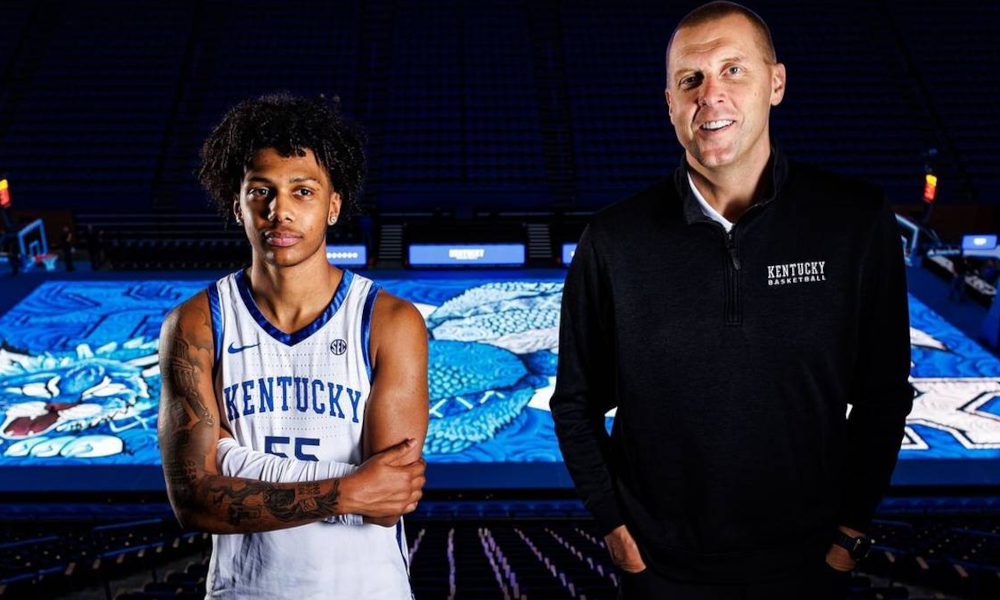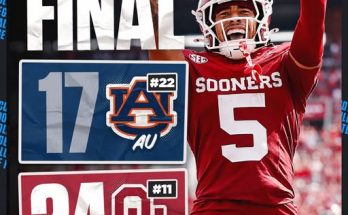Kentucky Basketball is never short on headlines, expectations, or passionate debates, and as another college basketball season inches closer, the spotlight once again shifts to Lexington. With a reloaded roster, fresh coaching energy, and the weight of history and hype pressing down on the program, the central question emerges: where should Kentucky be ranked in the preseason polls?
The answer, like everything in college basketball, is layered in nuance. Preseason rankings are a combination of projection, pedigree, and potential. They’re inherently speculative, but they still matter. They frame national conversation, shape early-season narratives, and influence recruiting momentum and tournament seeding down the line. For Kentucky, a program that considers anything less than Final Four contention a disappointment, getting the preseason ranking right isn’t just a matter of pride—it’s a barometer for whether the rest of the college basketball world is taking them seriously.
To assess where Kentucky deserves to be slotted, one must examine the team’s roster construction, offseason moves, coaching situation, and how they compare to the national landscape. First, let’s consider the foundation: the roster. Gone is the previous era’s revolving door of underperforming five-stars and unfulfilled promise. In its place is a new wave of high-character, versatile talent mixed with critical returning pieces who know what it means to wear the blue and white.
Perhaps the most pivotal decision of the offseason was Brandon Garrison opting to return to Kentucky. The 6-foot-11 center could have easily pursued professional opportunities but instead doubled down on his college career. His decision reflects more than loyalty; it reveals a belief that Kentucky is about to be something special. Garrison brings an elite defensive presence, rebounding toughness, and improved touch around the rim. In a game increasingly dominated by floor-spacing big men and rim protectors, he checks both boxes. His presence alone anchors the Wildcats in the national conversation.
Adding to that frontcourt prowess is the return of Otega Oweh, a player whose commitment to Kentucky sent shockwaves through the SEC. Oweh’s two-way ability, work ethic, and leadership make him a coach’s dream. He may not always stuff the stat sheet, but he impacts winning on both ends of the floor. Combine Oweh’s grit with the explosive potential of incoming freshmen and transfers, and Kentucky’s perimeter play suddenly looks deep, athletic, and dangerous.
Recruiting has never been Kentucky’s issue, but the 2025 class feels different. It’s not just about talent—it’s about fit. The newcomers arrive without entitlement, eager to work, willing to buy into a system, and hungry for hardware. That change in culture is no coincidence. After years of falling short of expectations, there’s a newfound clarity in how Kentucky is building its team. The days of purely relying on one-and-done stars may not be completely gone, but they’re supplemented by savvy transfers and returners who bring maturity and balance to the lineup.
The coaching situation also plays a role. With the John Calipari era now in the rearview mirror, a new voice commands the program. While Calipari restored Kentucky’s national relevance with a national title in 2012 and multiple deep tournament runs, the program had stagnated in recent years. The new leadership promises a blend of modern offensive schemes, defensive tenacity, and roster continuity. It’s not a total departure from Kentucky’s identity, but it is a needed evolution.
New coaching regimes often struggle in their first year, but there’s reason to believe this situation is different. The new coach inherits a roster that was largely built with his system in mind. Early reports from practice describe a team that is locked in, connected, and cohesive—words that haven’t always applied to recent Kentucky teams. While wins in June workouts don’t guarantee March success, they do suggest the culture is right.
Then there’s the SEC landscape. Tennessee, Alabama, and Auburn will all be formidable again. Arkansas has reloaded. But Kentucky’s talent, when fully realized, is as good or better than any team in the conference. The key word, of course, is “realized.” Talent is potential. Execution is what wins games. But if Kentucky’s pieces fall into place, they could very well be cutting down nets come April.
What separates this Kentucky team from others in recent memory is its defensive potential. Garrison is a game-changing anchor. Oweh can guard multiple positions. The guards are quick, disruptive, and relentless. Defense travels, and in March, it wins. For a team looking to re-establish itself on the national stage, that defensive foundation is critical.
Still, Kentucky enters this season with questions. How quickly can the roster gel? Can the coaching staff make in-game adjustments on the fly, especially against elite opposition? Will the young players stay confident if adversity strikes early? And perhaps most importantly: can Kentucky finally get over the hump and make a deep NCAA Tournament run after several seasons of disappointment?
Given all this, where should Kentucky be ranked in the preseason?
Top 10 is too low. That much seems clear. A fringe top-15 ranking would not reflect the roster’s potential or respect the returning experience. At the same time, crowning Kentucky in the top three might feel premature given the coaching transition and the inevitable growing pains of a newly assembled unit.
The sweet spot is between No. 4 and No. 6. That’s the tier that reflects respect without overhype. It signals to the college basketball world that Kentucky is back in the national title conversation without inflating expectations beyond what is reasonably achievable.
This range puts them ahead of solid but less dynamic rosters like Houston or Illinois and keeps them just below projected juggernauts like Kansas and Duke, who return a stronger combination of experience and proven coaching. However, by placing Kentucky in the top six, pollsters acknowledge the program’s elite talent, high ceiling, and serious potential to contend.
Preseason rankings are a snapshot of potential. But for Kentucky, they also serve as a statement. This is a program that has absorbed its fair share of criticism, endured ridicule over tournament collapses, and listened as rivals declared the era of Big Blue dominance over. And yet, here they stand—reloaded, refocused, and ready.
There’s a chip on this team’s shoulder. It’s personal. The players want to prove they belong among the nation’s best. The new coach wants to prove Kentucky can win without leaning on reputation alone. The fans want to believe again.
This isn’t just about basketball. It’s about reclaiming an identity. Kentucky isn’t just a blueblood—it’s a measuring stick. And after a few seasons of wandering in the wilderness, the Wildcats are positioned to remind the world why they’re one of the sport’s premier programs.
Being ranked No. 4 to No. 6 in the preseason isn’t the ultimate goal. Championships are. But it would be the first sign that the tide has turned. That belief has returned. That fear of playing in Rupp Arena is back.
In truth, the Wildcats won’t care where they’re ranked in October if they’re dancing deep into March. But make no mistake: this preseason ranking will matter. Not just as a number next to their name, but as a sign of something greater. Respect. Renewal. Revenge.
So, where should Kentucky be ranked in the preseason polls? Right in the heart of the top six. High enough to reflect the program’s firepower and promise. Grounded enough to stay hungry. Perfectly placed to remind everyone that Big Blue Nation never stays down for long.
Basketball is back in Lexington. The Wildcats are stalking greatness again. And the polls? They better get it right.



